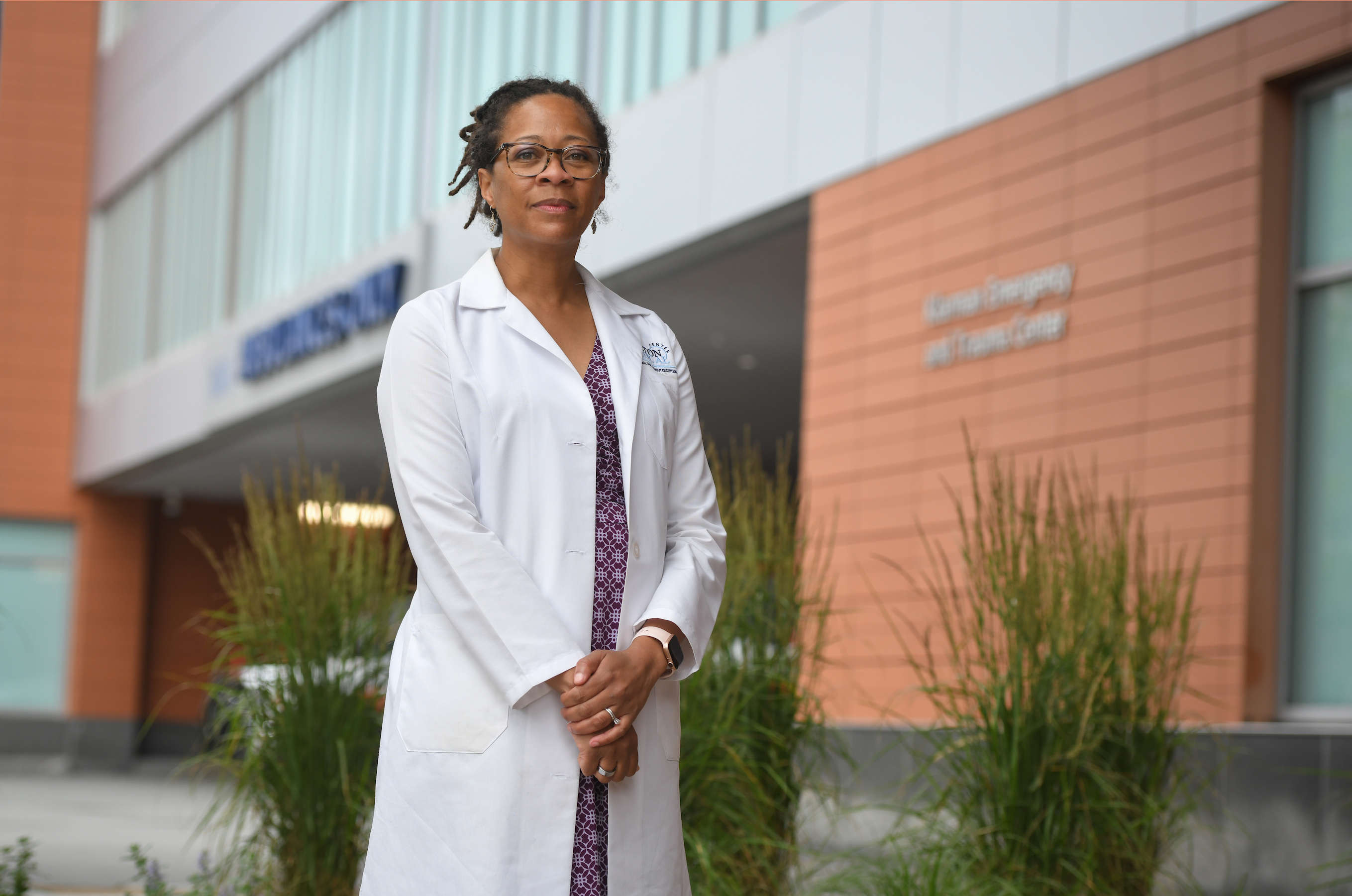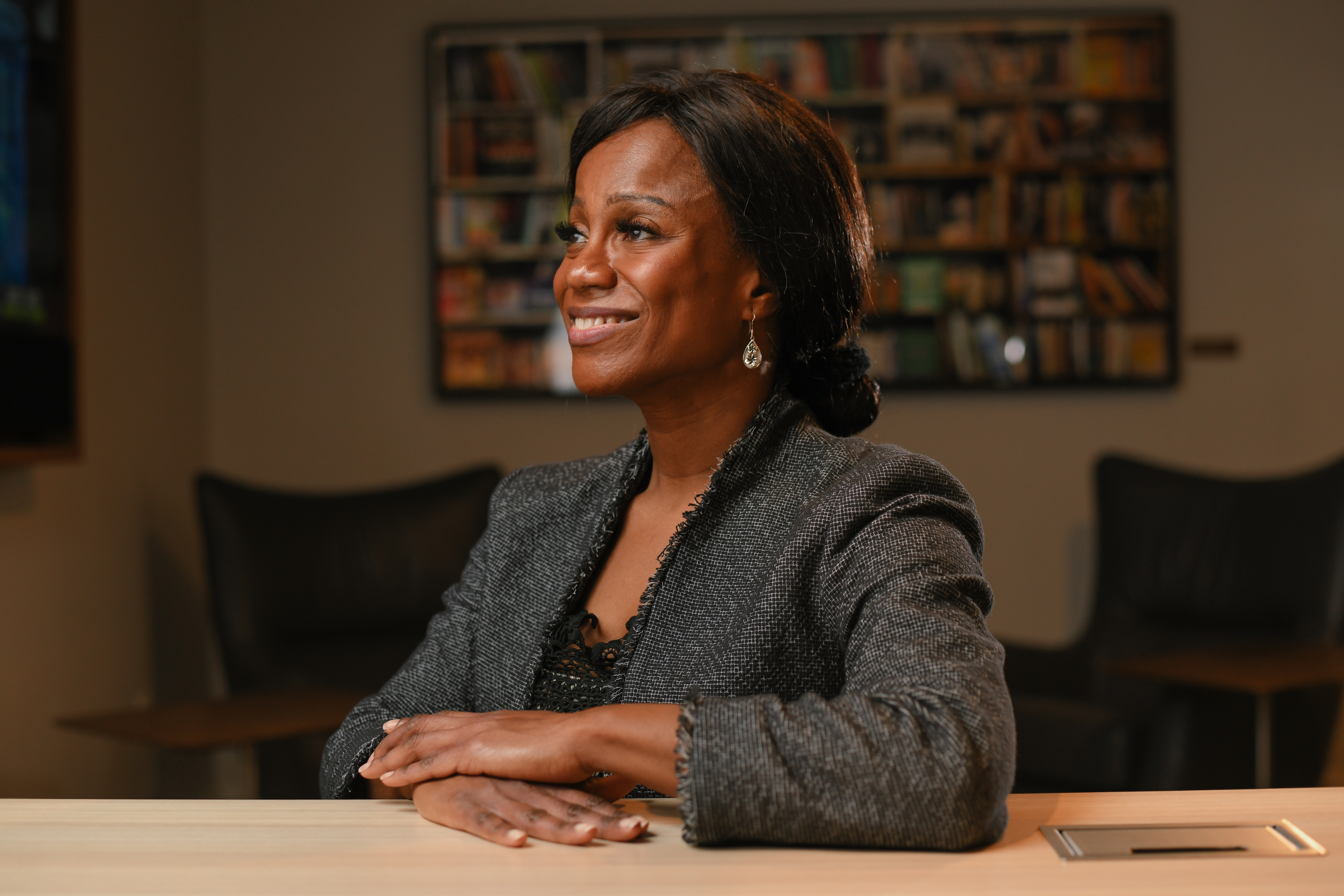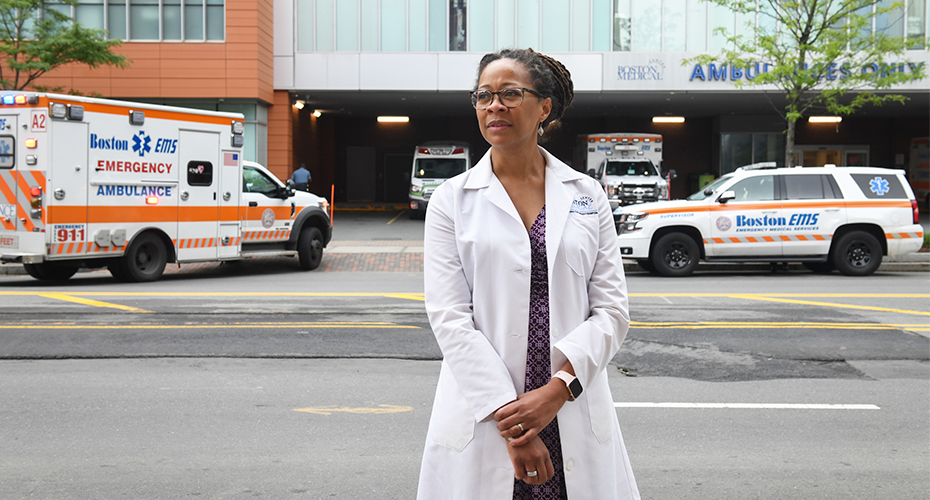Mar 16, 2023
When racism is the medical emergency
Coverage is proud to publish columns featuring the important perspectives of Black women physicians who belong to the Diva Docs network in Greater Boston. Today, Dr. Vonzella Bryant, a Boston Medical Center emergency department attending physician, shares her thoughts with Dr. Philomena Asante, leader of Diva Docs Boston and creator of the Diva Docs series for Coverage.
I come from a family of helpers and teachers.
My mother, a CPA, and my father, a high school teacher and a coach, were always active in community service. They embody everything that made me want to become a doctor, where I feel my job is teaching and helping.
Because I always loved science, I went to Xavier University, a historically black university with a proud legacy of producing Black doctors, and then to University of Pennsylvania for medical school.
When I did my emergency medicine rotation, I fell in love with the ER. I get to take care of different kinds of patients with different kinds of conditions, including critically ill patients. I know how to stop bleeding. I know how to place an IV. If someone has a chest injury that requires a chest tube, I know how to do that. I can evaluate chest pain and make sure that it’s not a heart attack, a blood clot, or an aortic dissection. I can make sure that weakness isn’t a stroke or diabetic ketoacidosis. I can determine if belly pain is appendicitis or a ruptured diverticulitis. I can intubate a patient with pneumonia who needs oxygen.

I love working at Boston Medical Center mainly because it’s a safety net hospital, which means that we take all comers. Our motto is “exceptional care without exception.”
Our patient population is diverse – some are homeless, many are low-income, and 70% are Black or Hispanic patients.
As my colleague Dr. Thea James says, our mission is to help our patients thrive instead of just survive.
We can get patients signed up for health care coverage. We can help them find low- to no-cost medications. We have a food pantry and a test kitchen to help patients learn how to eat healthier meals. We have a trauma intervention program for young people. We are investing in a multiuse development with low-income housing and a grocery store with healthy food that will hire people from the community.
The toll of racism
Every day I see the systemic racism at the root of social determinants of health. For example, if your family, like so many through our history, suffered “red-lining” discrimination and was unjustly denied a mortgage for a house in a neighborhood with a good school system, parks and grocery stores, that put your health at risk: a substandard education may mean you are likely to wind up in lower-paid, more physically demanding work, and if you live in a food desert without access to fresh fruit and vegetables and whole grains, in an area where it’s not safe to exercise, you are at higher risk for diabetes, high cholesterol and stress.
If your parent or grandparent was part of the giant wave of mass incarceration for petty drug crimes in the past 30 years, with tragic, disproportionate effects on the Black community, you suffered a loss that may have put you at heightened risk for post-traumatic stress disorder, depression and anxiety.
The hopelessness that inevitably comes from systemic racism can lead to mental illness and to substance use. It can create a vicious cycle of trauma and self-medication.
The effects of structural racism have been especially stark during the COVID-19 pandemic. Race is not a risk factor, but the racism that shapes our society is.
We have seen Black and Hispanic patients filling our ICU, as has been the case across the country. Some suffer from what are known as “comorbidities,” illnesses like diabetes that can stem from a lack of healthy food and exercise and can make COVID-19 especially dangerous. Many are frontline workers, grocery workers, and delivery drivers. They couldn’t stay at home to do their work. They had to go out to work so everyone else could stay home, and it killed them.
As a Black doctor, I am not immune to the pain of racism. I have had patients who assume that I’m the nurse tech or maybe somebody that’s going to bring them a meal or glass of water. We see so few Black people in this role that many Black physicians struggle with internalized “imposter syndrome,” the sense we can’t possibly belong, despite our years of training, education and experience. In my dual role as an ER attending physician and as director of undergraduate education, I am always mindful of how few academic Black physicians there are. Black and brown students need to see us in these roles, and so do all the other students.
Disparities in the ER
In the ER, we know medical studies have found racial disparities in treatment for pain. Studies have shown racial disparities in cardiac care as well.
We also know a lack of diversity among clinicians exacerbates bias and generates anxiety for both patients and health care workers. I’ve had to intervene at times when I’ve seen staff want to call security on a patient who is simply loud -- not threatening, just loud and Black.
As clinicians, our first step is to collect data to find the disparities. The second step is to learn about our implicit biases. And the third step is to standardize care so bias is no longer a factor.
Advocating for yourself
Patients can help advocate for themselves in the ER too.
- First, make sure you have a primary care provider who can help you maintain, monitor and improve your health on an ongoing basis. Don’t come to the ER for primary care. The emergency department is for serious illness and life-threatening illnesses or injuries. If you’re not sure if you should go to the ER, call your primary care doctor so they can assess your symptoms or maybe even set up an urgent visit.
- Second, have a “health care buddy” you can call from the ER to help you take note of the information and recommendations you receive from health care workers. These days, you can’t bring anyone with you to the ER, but you can bring your phone.
- Third, remember, more procedures and more medication doesn’t equal better care. You don’t necessarily need a CAT scan every time you fall and hit your head. You don’t need an antibiotic for every sore throat or earache.
- Speak up. If you feel your symptoms are worsening, ask a nurse to take your vital signs again. And please know that nurse and your physicians are doing their best. Try to treat them with kindness and patience, even when the circumstances are confusing or scary.
- If you have an elderly loved one, discuss their end of life choices before they wind up in an ER. Do they have a do not resuscitate order? Would they want chest compressions? What are their preferences?

The role of the health care establishment
Our hospitals and schools and universities have a role to play in diversifying our ERs. First, as BMC does, we can help sponsor a pipeline of diverse students, starting in high school or earlier.
We can reconsider whether test scores provide the best information about our med school applicants, and whether the evaluation process is biased. In our residency program, we changed our criteria. We put less emphasis on test scores and more on a passion for working in communities of vulnerable marginalized patients. Almost half our class this year are Black interns, a record for us.
We in academia can incorporate the study of racism into our medical schools. We can include diverse photos in our textbooks, which are vital for learning how to diagnose across skin color.
Faculty development is important. Often, Black doctors are assigned the “diversity” work, which is unpaid and does not lead to promotions. Make sure your Black faculty members have dedicated time to do their research.
It’s time for our country to reckon with racism in health care, and to recognize its deep roots. It is time for us all, as clinicians and patients, to reckon with it too.
PHOTOS BY FAITH NINIVAGGI

